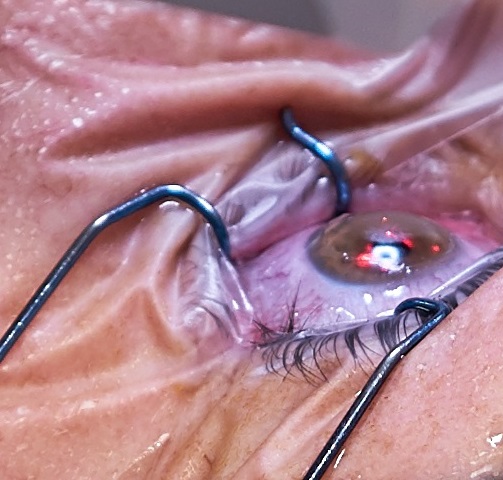Indications and outcomes of pediatric penetrating keratoplasty: A retrospective observational study
Medical hypothesis discovery and innovation in ophthalmology,
Vol. 11 No. 1 (2022),
1 April 2022
,
Page 27-33
https://doi.org/10.51329/mehdiophthal1442
Abstract
Background: Pediatric corneal transplantation can be indicated in congenital and acquired conditions. Challenges include preoperative evaluation, multiple intraoperative obstacles, and postoperative problems in follow-up and management. This study was aimed at identifying the indications and clinical outcomes of pediatric penetrating keratoplasty (PKP) in Jordan.Methods: This retrospective cohort study was conducted in Amman, Jordan. Using the hospital’s electronic database, all medical records of patients aged < 18 years who underwent PKP between January 2004 and October 2019 were reviewed. Preoperative evaluations included best-corrected distance visual acuity (BCDVA) and anterior and posterior segment examinations. Postoperative complications, BCDVA, and graft survival were examined 1 year postoperatively.
Results: A total of 149 cases of pediatric PKP were performed on 141 eyes of 118 patients with an age mean ± standard deviation (SD) of 11.44 ± 4.97 years at the time of surgery. Acquired non-traumatic corneal pathologies accounted for 65.8% of indications for PKP. The most frequent indication was advanced keratoconus (55.7%). Preoperative and 1-year postoperative BCDVAs significantly differed (P < 0.001), with 111 (74.5%) patients showing improved BCDVA, 12 (8.05%) patients showing worsened BCDVA, and 26 (17.45%) patients showing no change in BCDVA. The overall 1-year graft survival rate was 80.54%.
Conclusions: This was the largest study in Jordan involving pediatric patients who underwent PKP for various indications, showing a significant improvement in BCDVA, with a high survival rate at 1 year. Future studies with longer follow-up periods could provide stronger evidence for surgical outcomes and graft survival. Further, the option of lamellar keratoplasty in the pediatric age group should be assessed.

- Abstract Viewed: 0 times
- Full Text PDF Downloaded: 0 times


